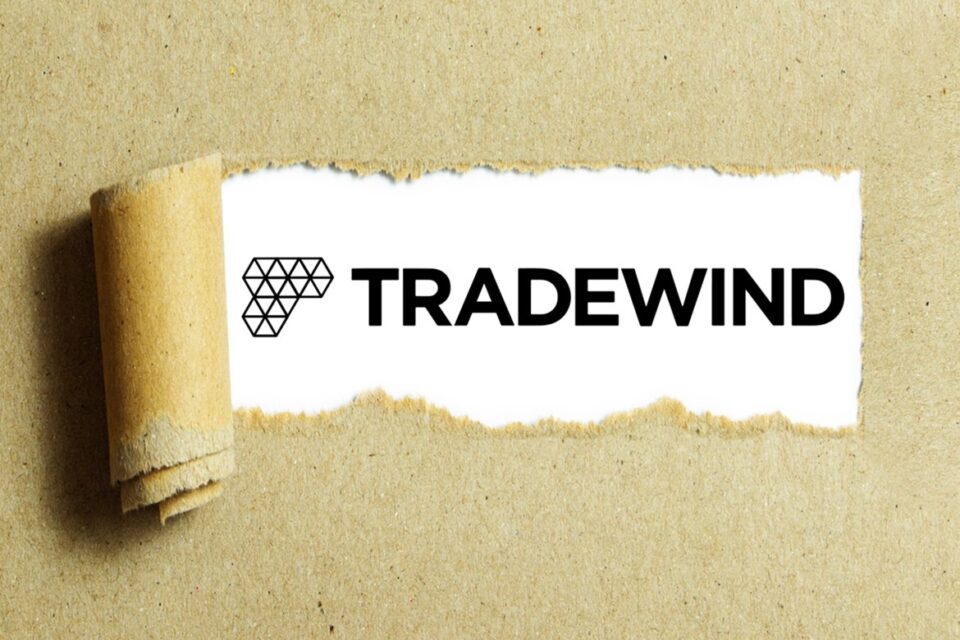Counterfeit gold, smuggling, and irresponsible mining practices are all issues in the precious metals industry. Something tying those problems together is that those on the receiving end of gold rarely question or inspect its origins from the very beginning of its production cycle. In many cases the gold tends to be professionally branded and inspected by several certified entities, making detection nearly impossible.
Tradewind’s latest technology, ORIGINS, enables producers to tag metals with certain criteria without requiring market participants to introduce expensive changes to operational and manufacturing processes. ORIGINS uses blockchain technology to synthesize large amounts of data, providing market participants with tools to make better-informed business decisions. This was demonstrated in ORIGINS’ first trade between Agnico Eagle Mines and the Bank of Montreal, which was confirmed by the Royal Canadian Mint.

Michael Albanese is the CEO of Tradewind Markets. With more than 20 years in the industry, Michael is experienced in global market infrastructure across securities markets, online brokerage, and leadership of complex businesses.
What has been the traditional company response to financial technology innovations nationally?
In the precious metals industry, records of title are less standard and rarely centralized. There are many ways to buy metals, but far fewer standardized means to effectively prove ownership. And unlike more traditional markets, transactions involving precious metals require literal physical transportation.
We believe there’s a better way to manage the ownership of precious metals by using blockchain, distributed ledger technology and cloud-based technology solutions to simplify processes, increase transparency and open up new opportunities. We’re using cutting-edge technology to revolutionize an industry that’s been doing the same thing for generations.
How has this changed over the past few years?
Tradewind was created to reflect the growing necessity of pushing the precious metals industry into the digital future. Markets should be more convenient for participants. Our mission is to make physical assets more acceptable to buyers, sellers, borrowers, and lenders through digitization.
We’ve noticed industry-wide interest in our technology and have established relationships with top institutions and wholesalers. Our technology is being used to trade precious metals that are held securely in physical form at the Royal Canadian Mint—a sovereign depository. Custody and settlement are recorded digitally on a blockchain. We have almost every client vertical represented in our client base: the miner, the bank, the purchaser, and several steps in between.
This marks a major shift in industry attitudes over the past few years.
Is there anything that has created a culture of change inside the company?
We built Tradewind to reflect the changing nature of the precious metals industry, so naturally we’re constantly evolving. Our team members have vast experience in finance, trading and startup technology. We’re all excited about what lies ahead in the future of the precious metals industry. Responsible sourcing is very important to us, which was the impetus for creating ORIGINS.
What Fintech ideas have been implemented?
It’s cumbersome to invest in precious metals today, so we launched VaultChain™ to make it easier for investors to buy and sell gold and silver. Retail investors are faced with wide spreads, high storage costs, difficult form of ownership (bars, coins) and opaque title records. Institutions looking to utilize precious metals in financing trades face costly options and are dependent on a narrow subset of lenders willing to lend against these metals.
The industry also faces questions about responsible sourcing and transparency, so we introduced ORIGINS, which tags vital information on precious metals throughout the supply chain, including the name and geography of the mine where the metal was produced.
For a legacy industry, these are new and welcomed fintech ideas.
What benefits have these brought?
Dealers use our digital products to enable their clients to trade precious metals that are held securely at the Royal Canadian Mint. Custody and settlement is recorded digitally on a blockchain and the experience is much closer to investing in equities online. Storage costs are lower; assets are held with a sovereign depository, which reduces risk; and investors have clear title of ownership.
Once physical assets are recorded on digital ledgers, a variety of transactions become more secure and cost-efficient. As institutions seek to deploy metal as collateral, and as corporations seek to buy metal produced responsibly and ethically, our digital market is a natural opportunity for counterparties to locate each other, harvest the value of their assets, and deploy their assets as collateral.
Do you see any other industry challenges on the horizon?
Compared to equities and bonds, precious metals and alternative assets are difficult to settle. Further, records of title are less standard and underlying details lack transparency. Deployment as collateral is much harder, as assets weighing up to several tons must be transported and institutions are less willing to buy and sell without custodian involvement. There are several ways fintech can fix this.
Can these challenges be aided by Fintech?
Blockchain removes friction by issuing a standard ledger as an official record of title. We’re already seeing large dealers and wholesalers in North America adopt this. Mines can tag metals based on where they were produced and prove compliance with responsible production standards and other ESG criteria. The digital nature of the ledger allows for the separation of the physical location of an asset from its value. This technology was recently embraced by a large bank-related trust company for their collateral lending program and we’re in discussion with custodians and trust companies to facilitate institutional adoption.
Final thoughts…
It’s an exciting time for the precious metals industry just because it’s so ready for innovation. We’re creating technology that streamlines legacy processes by helping settle trades faster, allowing investors to invest in fractions of metals, and presenting the ability to leverage digital ownership in a variety of ways. We want to help investors rethink the possibilities of what can be done in the precious metals industry.


